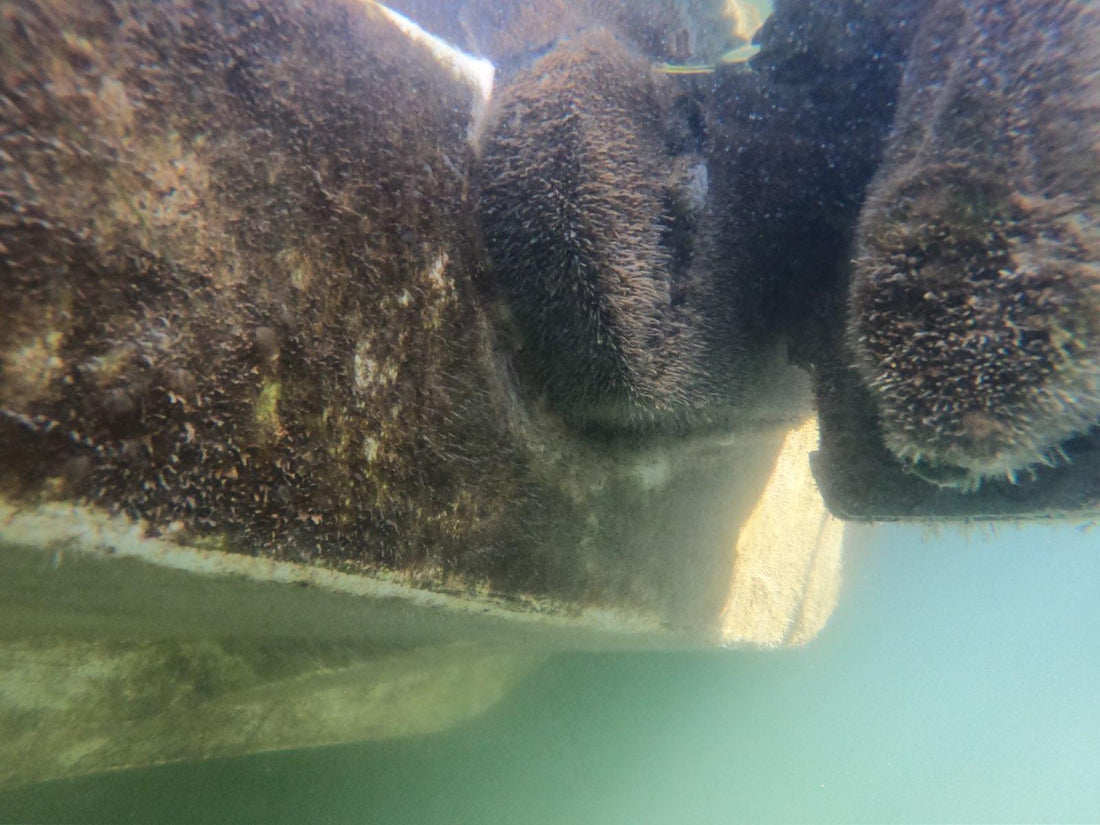
Foul Release Coatings
Share
The Battle Below: Why Foul Release Coatings Fall Short in Southwest Florida and Why Antifouling Paint Reigns Supreme
Southwest Florida's warm, nutrient-rich waters are a boater's paradise, but they also present one of the most aggressive environments for marine growth in the United States. While newer "foul release" coatings are gaining traction for their eco-friendly, non-biocidal properties, the reality on the ground (or rather, in the water) for boaters in our region is that they simply cannot compete with the relentless onslaught of marine organisms. Here's why a proper antifouling paint remains a necessity in Southwest Florida.
The Promise of Foul Release Coatings
Foul release coatings work on a different principle than traditional antifouling paints. Instead of releasing biocides (chemicals that deter or kill marine organisms), they create an ultra-slick, non-stick surface, usually made of silicone. The idea is that marine growth cannot firmly attach to this slippery surface and will be easily dislodged by the movement of the boat through the water or by light cleaning. They often boast benefits such as:
-
Eco-Friendly: No harmful chemicals leaching into the water.
-
Improved Performance: A slicker hull theoretically reduces drag, leading to better speed and fuel efficiency.
- Durability: Some claim long-lasting protection, reducing the need for frequent reapplication.
-
Clear Finish: Allows the original hull color to show through.
Brands market themselves with these advantages, highlighting their ability to deter growth through physical means rather than chemical ones.
The Harsh Reality in Southwest Florida Waters
While foul release coatings may perform admirably in certain conditions, particularly in colder waters or for vessels that are regularly used at high speeds, they often prove ineffective as a standalone solution for boats regularly docked in Southwest Florida. Here's why:
-
Explosive Marine Growth: Our warm Gulf waters are teeming with a diverse and incredibly fast-growing array of marine organisms, including aggressive barnacles, tenacious tubeworms, various types of algae, and challenging bryozoans. This environment fosters a rapid colonization of any submerged surface.
-
Static Immersion Challenge: Many recreational boats in Southwest Florida spend significant time at the dock. Foul release coatings rely heavily on water flow (i.e., the boat moving through the water) to shed growth. When a boat is stationary for extended periods, even the slickest surface can eventually be overwhelmed by the sheer volume and tenacity of attaching organisms. The initial "slime" layer quickly forms, creating a foothold for more robust growth.
-
Adhesion Strength: While foul release coatings claim to make it easier to clean off growth, they don't prevent growth from attaching to your boat. In a high-fouling environment like Southwest Florida, organisms will still adhere. The strength of this adhesion, even if weaker than on bare gelcoat, is often enough to require excessive, sometimes vigorous, cleaning to maintain performance. This can, and will, damage the coating.
-
Maintenance Expectations: While some foul release coatings claim to reduce cleaning frequency, the aggressive growth in Southwest Florida necessitate cleaning schedules that are far more frequent than those for boats with traditional antifouling paint. This negates one of the primary perceived benefits.
Why Proper Antifouling Paint is Necessary
For the vast majority of boat owners in Southwest Florida, a proper antifouling paint remains the most effective and practical solution for hull protection. Here's why:
-
Biocidal Action: Antifouling paints contain biocides (typically copper-based, though there are alternatives) that actively deter or kill marine organisms as they attempt to attach. This proactive approach is crucial in an environment where growth is rapid and relentless
-
Controlled Leaching: Modern ablative antifouling paints are designed to slowly release biocides as the paint wears away, presenting a continuously fresh, active surface. This mechanism effectively prevents hard growth.
-
Reduced Cleaning Frequency: While no bottom paint eliminates the need for all cleaning, a good antifouling paint significantly reduces the frequency and intensity of hull cleanings required compared to untreated hulls or those with foul release coatings in this region. This is particularly important for boaters who don't run their boats every day.
-
Proven Effectiveness: Decades of use in high-fouling areas like Southwest Florida have proven the efficacy of antifouling paints in protecting hulls and maintaining vessel performance.
-
Protection for Critical Components: Antifouling paint is vital not just for the hull but also for protecting running gear (props, shafts, rudders) where even small amounts of growth can severely impact performance and cause vibrations and damage.
-
-
In conclusion, while the concept of foul release coatings is appealing from an environmental standpoint, the unique and aggressive marine environment of Southwest Florida demands a more robust defense. For reliable protection against the relentless onslaught of barnacles and other marine organisms, a well-applied, high-quality antifouling paint remains the indispensable choice for boat owners in our region.
